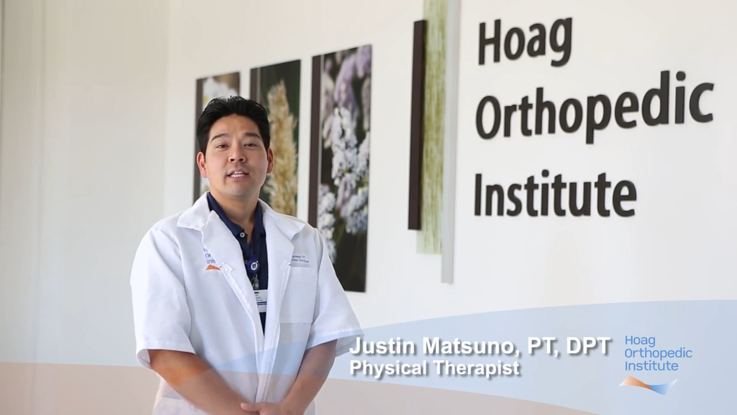Specializing in Scoliosis
Award-Winning Orthopedic Services in Orange County
About Scoliosis
Scoliosis is defined most traditionally as a lateral deviation or sideways curvature of the spine. In reality, scoliosis is actually a three-dimensional problem, with abnormalities of the rotation of the spine in the coronal (front), sagittal (side), and axial planes. Scoliosis is a fairly common diagnosis, and can present in infancy, childhood, adolescence, or develop as a result of disc degeneration in older adults. While scoliosis can be caused by conditions such as cerebral palsy and muscular dystrophy, the cause of most scoliosis is unknown. This may change in the future, as research is ongoing as to the mechanisms that lead to “idiopathic” scoliosis – no other identifiable reason.
Symptoms of Scoliosis
Most cases of scoliosis are mild, but some spinal deformities worsen as children continue to grow. Severe scoliosis can be disabling. Patients with scoliosis may notice that their shoulders or hips are uneven, skin folds are asymmetric, their head is not centered over their pelvis, or that clothes fit awkwardly or hang unevenly. Typically, scoliosis by itself is not painful, and patients with more than mild back pain often have another diagnosis for pain.
Signs and symptoms of scoliosis may include:
- Uneven shoulders or hips
- Uneven waist
- Abnormal gait, changes with walking
- Leaning to one side
- Muscle spasms
- Reduced range of motion of the spine
- Rotated or twisted spine
- Trouble breathing
- One shoulder blade that appears more prominent than the other
- Sideways curvature in the spine while in a bathing suit
Diagnosis of Scoliosis
The diagnosis is confirmed through physical examination and and an X-ray. Measuring a curve of more than 10 degrees on a posterior-anterior X-ray confirms the diagnosis. If the curve is minor (less than 20 degrees) or the patient is done growing, typically treatment involves only observation. The orthopedic spine surgeon will usually follow the patients with radiographs periodically to ensure the curve does not worsen.
If the surgeon suspects that an underlying condition, such as a spinal tumor, is causing the scoliosis, they may recommend additional imaging such as a CT scan or MRI may be ordered by the doctor to confirm the diagnosis, especially if surgery is being planned.
Your spine surgeon may also perform a neurological exam to check for:
- Muscle weakness
- Numbness
- Abnormal reflexes
Treatment Options for Scoliosis
Most children with scoliosis have mild cases and may not need treatment, just periodic monitoring to ensure the curvature has not worsened. If the child is still growing and has moderate scoliosis, the doctor may recommend bracing. Wearing a brace won’t cure scoliosis, but it can usually help prevent further curvature.
Bracing is usually required after the patient’s spine curvature measures 20-25 degrees, if there is still growth remaining. Scoliosis curves that exceed 45-50 degrees are considered severe and considered for surgical treatment.
In severe cases, your spine surgeon may suggest scoliosis surgery to reduce the spinal curvature and to prevent it from getting worse.
Surgical Treatment of Scoliosis
The most common scoliosis surgery is spinal fusion. Surgical correction of scoliosis involves cutting the bones to allow them to realign more closely with “normal” spinal curvatures in all 3 planes (coronal, sagittal, and axial) and to fuse them in that position, usually stabilizing them with screws and rods. If the scoliosis is due to disc degeneration in an adult, nerves may become pinched, and are decompressed at the time of surgery. Surgery for scoliosis is performed as an inpatient procedure in the hospital and recovery time varies depending on the complexity of the surgery.
If scoliosis is progressing rapidly in a patient at a young age, surgeons can install a rod that can adjust in length as the child grows.
Find a Back Doctor or Spine Surgeon
If you have Scoliosis, our board certified, fellowship-trained orthopedic spine surgeons will build a custom treatment plan to help you get back to doing the things you love doing.
Hoag Orthopedic Institute is ranked as one of the top Orthopedic Hospitals by U.S. News & World Report in 2020-2021. Contact Hoag Orthopedic Institute today to schedule a consultation with one of our spine doctors.
Find a spine surgeon that treats Scoliosis.
Call us at
(855) 999-4641 to make an appointment.
-
 Back to Driving Spine
Back to Driving Spine"Procedure: Complex Spinal Surgery Watching TV, taking long walks, getting up out of a ..."
Read More -
 Back to Enjoying Life Spine
Back to Enjoying Life Spine"Procedure: Spinal fusion Jonathan Dibiasi and his family love spending time at their ..."
Read More -
 Back to Running Spine, Sports Medicine
Back to Running Spine, Sports Medicine"“I can’t believe I’m walking, let alone running,” says car crash survivor, seven-time ..."
Read More -
 Back to Savoring Every Day Hand & Wrist, Spine
Back to Savoring Every Day Hand & Wrist, Spine"Procedures: Spinal Surgery: January 16, 2017; Right Wrist Fusion: January 12, 2018 ..."
Read More -
 Back to Painting Spine
Back to Painting Spine"Procedure : Multi-level Spinal Fusion At age 69, lifelong professional artist ..."
Read More -
 Back to Wearing Cowboy Boots Spine
Back to Wearing Cowboy Boots Spine"For two years, Sally Greer spent most of her time on her couch, and gained 130 pounds ..."
Read More -
 Back to Being Healthy Spine
Back to Being Healthy Spine"I would like to get a message to a couple of your staff members and their supervisor. ..."
Read More -
 Back to Dancing Spine
Back to Dancing Spine"For the past decade, Irvine aerospace engineer Shoja’s zest for life led him to grace ..."
Read More -
 Back to a Better Life Spine
Back to a Better Life Spine"I had spine surgery by Dr. Richard Lee on January 3rd. It appears to have been been ..."
Read More










